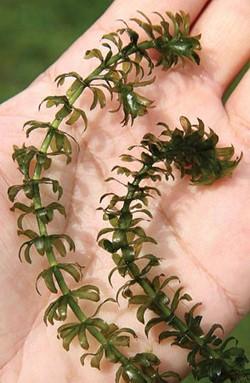News Releases from Region 02
EPA Announces $900,000 in Federal Grants to Tackle Invasive Species in New York State
(New York, N.Y.) The U.S. Environmental Protection Agency has awarded $900,000 to the Hobart and William Smith Colleges to address two invasive species in the Great Lakes and Finger Lakes regions of New York State. The Great Lakes and Finger Lakes provide more than 30 million Americans with drinking water and help support a multibillion-dollar economy. An invasive species is a plant or animal that is foreign to an ecosystem. During the past two centuries, invasive species have significantly changed the Great Lakes ecosystem and other fresh water lakes in New York State. These changes have greatly affected the economy, health, and well-being of the people that rely on the system for food, water, and recreation. Once established, it is extremely difficult to control their spread.
Two grants totaling $900,000 to Hobart and William Smith Colleges were awarded through the EPA’s Great Lakes Restoration Initiative. Additional grants to New York State recipients to tackle the problem of invasive species will be announced in the coming weeks.
"Invasive species is a serious problem facing the Great Lakes and Finger Lakes," said EPA Administrator Scott Pruitt. “These EPA grants will help prevent larger costs and damage to the environment in the future and will educate students and boaters about what they can do to reduce this threat to the Great Lakes and Finger Lakes."
“Preserving the Great Lakes and Finger Lakes regions for future generations is a priority of mine. This grant money will aid in controlling invasive species and help stabilize the ecosystem of the lakes. In turn, this will have a positive impact for area residents and the local economy,” U.S. Representative Tom Reed (NY-23) stated.
The grants announced today for Hobart and William Smith Colleges are:
Starry Stonewort Collaborative for the Great Lakes Region - $299,474
Hobart and William Smith Colleges will convene a workgroup of resource managers and stakeholders to minimize the impacts of the aquatic invasive plant species, Nitellopsis obtuse, commonly known as starry stonewort. This invasive algae-like plant is extremely fast-growing, creating thick mats of vegetation that obstruct boating, fishing and swimming, and destroy spawning sites for native fish. The Starry Stonewort Collaborative will develop prevention strategies, refine best management practices to control the species, and enhance surveillance and control activities.

Photo courtesy of New York State Department of Environmental Conservation.
Hydrilla Control in the Finger Lakes Region - $598,960
Hobart and William Smith Colleges will use the grant funding to help control the aquatic invasive plant species Hydrilla verticillata in a 30-acre area of Cayuga Lake. Like the starry stonewort, Hydrilla is also fast-growing and obstructs boating, fishing and swimming, and destroys fish habitats. Shoreline property values can be diminished in areas where this invasive has taken over. This project will include training opportunities for approximately 1,100 community members.

Photo courtesy of New York State Department of Environmental Conservation.
For more information on the Great Lakes Restoration Initiative, visit: http://glri.us.
Follow EPA Region 2 on Twitter at http://twitter.com/eparegion2 and Facebook at http://facebook.com/eparegion2.
17-057
